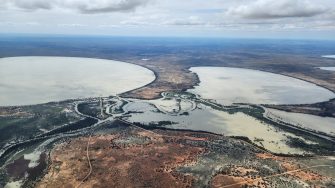The Menindee Lakes Water Savings Project – an example of poor decision-making
Zoe Ford, Richard Kingsford, Sue Jackson, Gilad Bino, Kate Brandis
Zoe Ford, Richard Kingsford, Sue Jackson, Gilad Bino, Kate Brandis

The Menindee Lakes are part of the Murray-Darling Basin – the largest basin in Australia, spanning one-seventh of the continent. 2.2 million people live across its area, and its surface water supplies about 40 per cent of Australia’s irrigated agricultural output.
Our study led by researchers at the Centre for Ecosystem Science at UNSW Sydney examined a large water-savings project at Menindee Lakes in News South Wales, called the Menindee Lakes Water Savings Project.
The $151.8 million project’s goal is to save water for the Murray Darling Basin Plan by implementing infrastructure measures and rule changes to reduce water lost to evaporation from Menindee Lakes.
We investigated the decision-making in relation to the ecology and management of the project, alongside scientific evidence and stakeholder consultation, identifying significant weaknesses in the governance approach for the project.
Specifically, we examined long-term rainfall and waterbird population data at Menindee Lakes in association with flows, alongside the evidence basis for government decision-making for the project. We also interviewed local communities, dependent on the lakes, in relation to the ecological condition, consultation processes and future options for the Menindee Lakes and the Barka/Darling River upstream.
The paper in international journal Ecology and Society and its accompanying report found that the NSW Government project to alter the Menindee Lakes lacked rigorous evidence, transparency and effective community engagement.
This report and our paper, published in Ecology and Society, details six key findings:
Along with 4 recommendations:
Professor | School of Environment and Science - Environment and Marine
Griffith University, Queensland